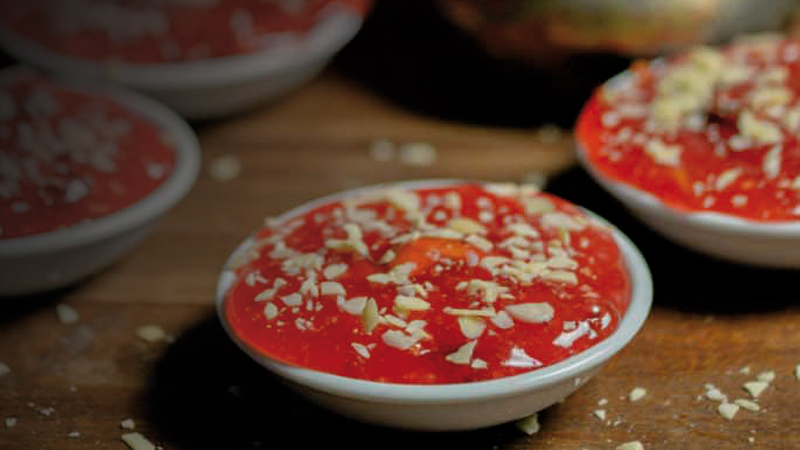Halwa hunting in Oman’s former capital
Published: 07:08 PM,Aug 22,2018 | EDITED : 11:03 PM,Mar 15,2025


halwa
If you are looking for a place to escape this weekend, Rustaq will be a good city to start an adventure. While much has been said about its popular attractions like Hazm Castle and Rustaq Fort or the healing waters of Ain Kasfah, there’s actually more than what meets the eye in this city that perfectly amalgamates past and present.
For me, however, I would encourage you to explore Rustaq to hunt for the best Omani Halwa.
Not known to everybody is that Rustaq is one of the few places in the country that produce in large quantity this long-honoured and well-loved delicacy. There are several factories and even homes that produce their own unique version complementing it with their preferred choice of additives.
A must in many Omani occasions such as Eids and other religious and social gatherings, halwa is also an essential element of wedding celebrations. It always precedes the banquet where the groom’s family members or their representatives go to guests and offer them Halwa dishes followed by coffee cups — once everyone has their coffee, they cheer and wish the bride for their well-being and happy marriage.
The creation of halwa requires not only patience but experience.
“There are many ingredients included but the most important ones are starch, eggs, sugar, water, margarine, nuts, saffron, cardamom and rose water,” shared Nasser al Khayari, owner of Al Khayari Halwa Shop, one of the established names in halwa production in Rustaq.
“All these ingredients are gradually mixed with specific proportions and quantities. Many of the skilled Omani manufacturers already know this by heart,” he added.
The vessel in which the ingredients are placed and cooked is made of copper and is locally called “Al Margal”.
In the past, Nasser shared, “the mixture was cooked on firewood stoves extracted from trees (Semer or Qart or Gaff). The usage of these trees spread in most wilayats of the Sultanate and are trusted because of their hardness and strength.”
“The ingredients are mixed together manually for at least two hours. This is usually done manually. While many small manufacturers and those in homes still create it traditionally, modern manufacturers are now using the aid of technology by using electronic mixing devices in their factory. They also replaced using firewood with gas,” he said.
It’s hard to trace the origin of Omani halwa but people said that its creation started thousands of years ago and remain till this day.
The popularity of Omani halwa has reached different countries not only in the Middle East but in the world and wherever Omanis are, they are able to distinguish the taste of halwa made in the country.
Today, many of the products are sold in their popular rounded plastic or metal containers and in varying sizes. It also has a long shelf-life and without the help of heating or cooling devices, most of the products can last up to four to six months.
For German travellers Jorgen and his wife Sylvia, they preferred their halwa with walnuts.
“They usually come with different additives. Cashew and almond are preferred by many but we’ve come to like the ones with walnuts,” the couple shared.
In 2015, the Sultanate attempted to break Guinness World Record for the largest halwa made at 675kg in time with the 45th National Day. Initiated by Al Hosni Omani Sweets, the halwa included 900lt of water, 67.5kg of wheat starch, 405kg of white sugar, 270kg of black sugar, 90kg of almonds, 90kg of cashew nuts, 90kg of walnuts, 22.5kg of saffron, 135lt of rose water, 90kg of cardamom, 90kg of clarified butter, and 135 eggs.
RUQAYA AL KINDI & TITASH CHAKRABORTY
